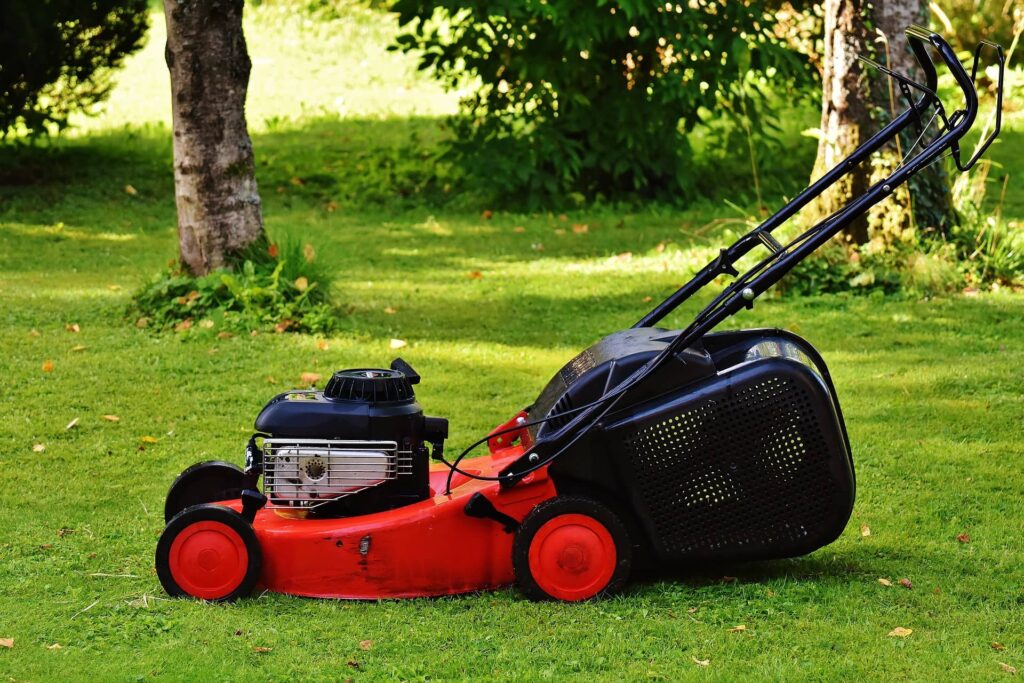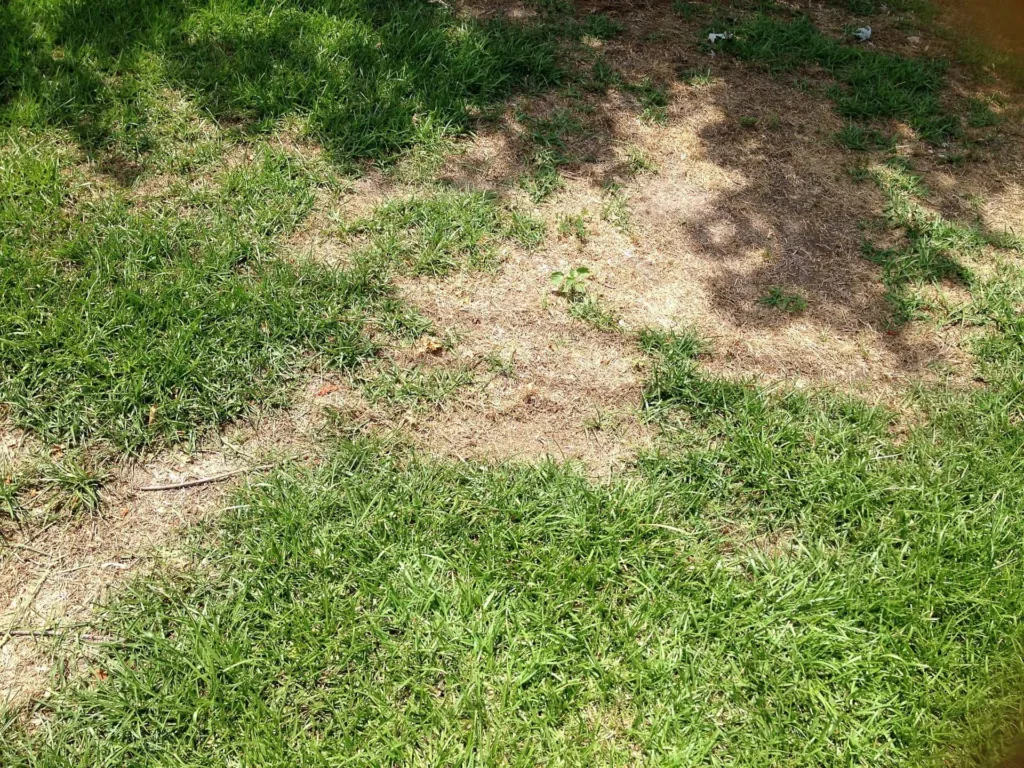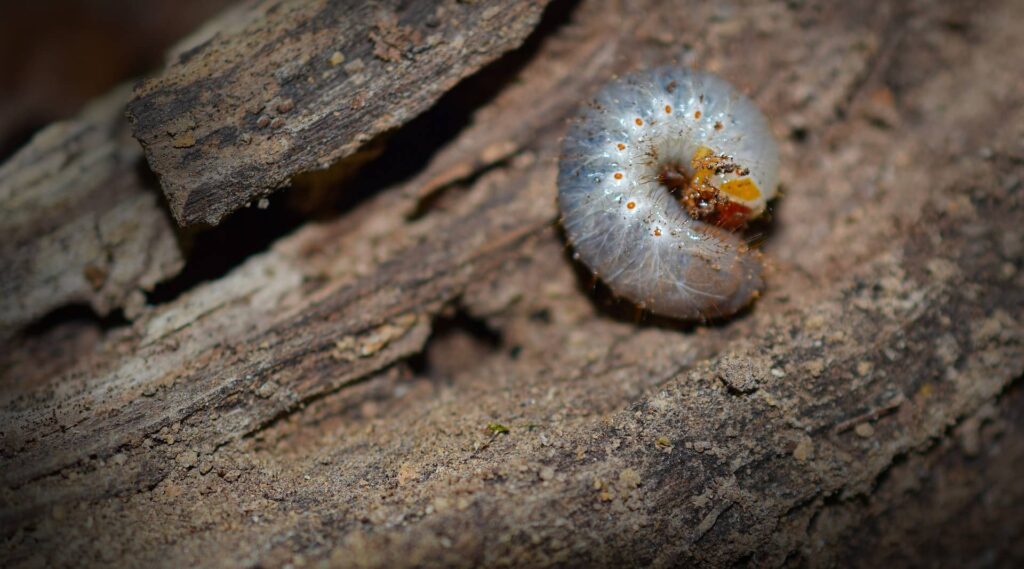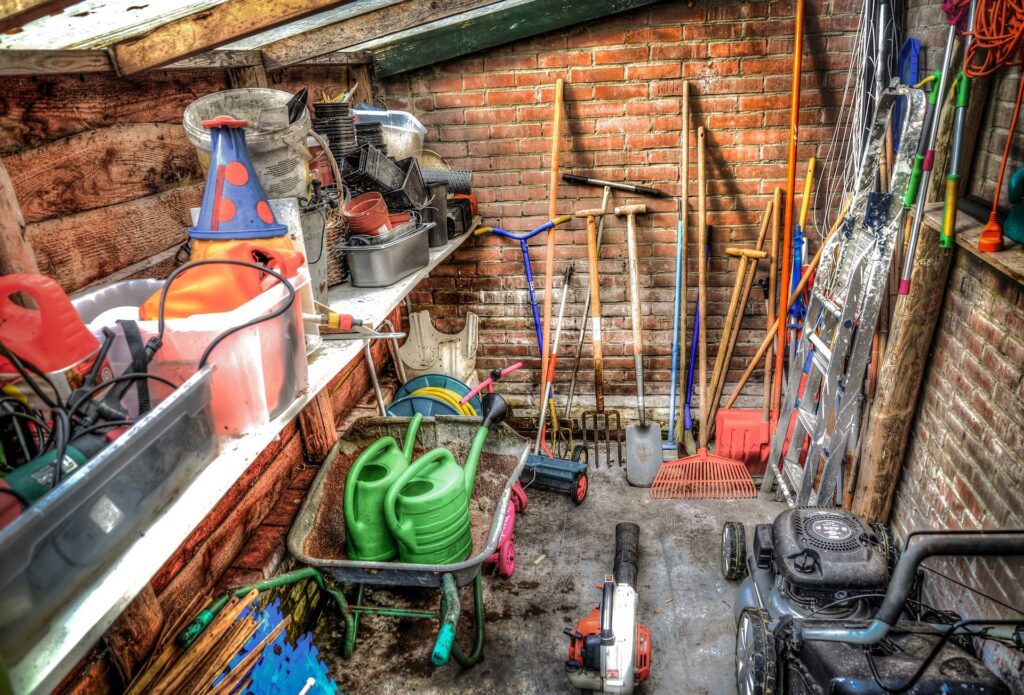Are you a new homeowner staring at your lawn, wondering where to start? Or perhaps you’ve been struggling to keep your grass green and healthy? Don’t worry – you’re not alone. Lawn care for beginners can seem daunting, but with the right knowledge and tools, you’ll be on your way to creating a lush, vibrant outdoor space. This comprehensive guide will walk you through everything you need to know about lawn care for beginners, from understanding your soil to tackling common problems.
Introduction to Lawn Care for Newcomers
A well-maintained lawn isn’t just about aesthetics; it’s about creating a healthy outdoor environment for your family and contributing positively to your local ecosystem. For beginners, lawn care can present several challenges, but understanding these hurdles is the first step to overcoming them.
But don’t let these challenges intimidate you. With this guide, you’ll learn the fundamentals of lawn care for beginners and gain the confidence to tackle each task effectively. Remember, every expert was once a beginner, and your lawn care journey is just beginning.
Getting to Know Your Lawn: Essentials for Beginners
Understanding Soil: The Foundation of Lawn Care
Your lawn’s health starts from the ground up. For beginners in lawn care, understanding your soil is crucial. Soil testing is an essential first step in lawn care for beginners. It provides valuable information about your soil’s pH level and nutrient content, allowing you to make informed decisions about fertilization and soil amendments.
How and When to Test Your Soil:
- Purchase a soil testing kit from a garden center or contact your local extension office. While home testing kits can provide basic information, professional tests from extension offices often offer more comprehensive results.
- Collect samples from various parts of your lawn, about 6 inches deep. It’s important to take multiple samples because soil can vary even within a small area.
- Mix the samples thoroughly in a clean plastic bucket. Remove any stones, twigs, or other debris.
- If using a home testing kit, follow the instructions provided. These usually involve mixing a small amount of soil with water and a testing solution, then comparing the color to a chart.
- If sending to a lab, package about 2 cups of your mixed soil sample according to their instructions. Many labs provide specially designed boxes for this purpose.
The ideal pH for most lawns is between 6.0 and 7.0. This slightly acidic to neutral range allows grass to most effectively absorb nutrients from the soil.
Identifying Your Grass Type
For lawn care beginners, knowing your grass type is essential. It determines your lawn’s care needs throughout the year. Different grass species have evolved to thrive in specific climates and conditions, which is why proper identification is crucial for effective lawn care.
Grass types are broadly categorized into two main groups: warm-season and cool-season grasses. Let’s delve deeper into each category:
Warm-Season Grasses:
Warm-season grasses thrive in temperatures between 75-90°F (24-32°C) and go dormant in cooler weather. They’re typically found in southern regions and require less water than cool-season grasses. Common types include:
- Bermuda grass: Known for its drought tolerance and ability to withstand heavy foot traffic. It has a fine texture and creates a dense turf.
- Zoysia grass: Slower-growing but forms a thick, carpet-like lawn. It’s more shade-tolerant than other warm-season grasses.
- St. Augustine grass: Prefers warm, coastal areas and has a coarse texture. It’s known for its ability to grow in sandy soils.
- Centipede grass: Low-maintenance grass that grows well in acidic soils. It has a light green color and medium texture.
- Bahiagrass: Extremely drought-tolerant and can grow in poor soils. It’s often used in low-maintenance areas.
Cool-Season Grasses:
Cool-season grasses prefer temperatures between 60-75°F (15-24°C) and can stay green year-round in moderate climates. They’re typically found in northern regions. Common types include:
- Kentucky bluegrass: Known for its rich color and ability to self-repair. It requires full sun and regular maintenance.
- Fescue (Tall and Fine): Drought-resistant and shade-tolerant. Tall fescue is coarser, while fine fescue has a softer texture.
- Ryegrass (Perennial and Annual): Often used in seed mixes for quick establishment. Perennial ryegrass is used for permanent lawns, while annual ryegrass is used for temporary cover.
- Bentgrass: Very fine-textured grass often used on golf courses. It requires intensive maintenance for home lawns.
Seasonal Lawn Care: A Beginner’s Year-Round Guide

Lawn care for beginners involves understanding that your lawn’s needs change with the seasons. Each season brings its own set of challenges and opportunities for lawn care. By following a seasonal approach, you can ensure your lawn receives the right care at the right time, promoting year-round health and beauty.
Spring Awakening: Kickstarting Your Lawn Care Journey
As temperatures rise and your lawn emerges from winter dormancy, spring is a crucial time for lawn care beginners to set the stage for a healthy growing season. Here’s a more detailed look at what you should do:
- Clean up: Remove debris, fallen branches, and dead leaves. This not only improves your lawn’s appearance but also prevents smothering of new growth and reduces the risk of fungal diseases. Use a rake or a leaf blower to thoroughly clear your lawn.
- Overseed: Fill in bare patches to promote a lush, even lawn. Before overseeding, lightly rake the bare areas to loosen the soil. Spread grass seed evenly, then gently rake again to ensure good seed-to-soil contact. Water lightly but frequently until the new grass establishes.
- Start mowing: Begin when grass reaches about 3 inches in height. For the first mow of the season, set your mower blade slightly higher than you normally would. This helps protect the grass from stress and promotes stronger root growth.
- Apply pre-emergent herbicide: Prevent weed seeds from germinating. Apply when soil temperatures reach about 55°F (13°C). This is typically when forsythia bushes are in bloom. Be sure to water the herbicide in thoroughly after application.
- Fertilize: Apply a balanced, slow-release fertilizer to give your lawn a boost as it enters the growing season. Choose a fertilizer with a higher nitrogen content to promote leaf growth.
- Tune up your equipment: Sharpen mower blades, change the oil, and ensure all your lawn care tools are in good working order for the season ahead.
- Test and adjust soil pH: If you haven’t done so recently, spring is a good time to test your soil pH and make necessary adjustments.
Summer Maintenance: Keeping Your Lawn Lush in the Heat
Summer can be tough on your lawn, especially for beginners in lawn care. High temperatures and potential drought conditions can stress grass. Here’s how to keep your lawn healthy during the hot months:
- Water deeply but infrequently: This encourages deep root growth, making your lawn more drought-resistant. Aim to provide about 1-1.5 inches of water per week, either from rainfall or irrigation. Water early in the morning to reduce evaporation and fungal growth.
- Mow regularly: Maintain proper grass height to prevent stress. For most grass types, this means keeping it between 2.5-3.5 inches tall. Never remove more than 1/3 of the grass blade length in a single mowing session.
- Control pests: Watch for signs of insect damage and treat promptly. Common summer pests include grubs, chinch bugs, and armyworms. Look for brown patches or areas where the grass feels spongy underfoot.
- Practice grasscycling: Leave grass clippings on the lawn after mowing. They break down quickly, returning nutrients to the soil and reducing the need for fertilizer.
- Spot-treat weeds: Use targeted herbicide applications or hand-pull weeds to maintain a weed-free lawn without stressing the grass with broadcast herbicide treatments.
- Monitor for fungal diseases: Hot, humid conditions can promote fungal growth. Look for circular patches of discolored or dying grass and treat with a fungicide if necessary.
- Avoid heavy foot traffic: Stressed summer lawns are more susceptible to damage from foot traffic. Consider setting up pathways or designating play areas to protect the majority of your lawn.
- Adjust your mowing pattern: Change your mowing direction each time you mow to promote upright growth and prevent ruts.
For lawn care beginners, it’s important to be vigilant during the summer months. Regular inspection of your lawn can help you catch and address problems early before they become severe.
Fall Preparation: Setting Your Lawn Up for Dormancy
Fall is a critical time for lawn care. For beginners, it’s an opportunity to strengthen your lawn before winter and set the stage for a healthy spring. Here’s what to focus on:
- Fertilizing: Apply a slow-release fertilizer to strengthen roots. Use a fertilizer with a higher ratio of potassium, which enhances cold hardiness. This fall feeding is crucial for both warm-season and cool-season grasses.
- Aerating and dethatching: Improve soil health and reduce compaction. Aeration allows air, water, and nutrients to penetrate the soil more easily. Dethatching removes the layer of dead grass and roots that can accumulate at the soil surface. For most lawns, aeration every 1-3 years is sufficient.
- Raking leaves: Prevent smothering and fungal growth. A thick layer of leaves can suffocate your lawn and create ideal conditions for snow mold. Consider mulching leaves with your mower to return nutrients to the soil.
- Overseeding: For cool-season grasses, early fall is the best time to overseed. The cooler temperatures and ample moisture provide ideal conditions for seed germination.
- Adjust mowing height: Gradually lower your mowing height as growth slows. For the final mow of the season, cut cool-season grasses to about 2.5 inches and warm-season grasses to about 1.5 inches.
- Continue watering: Even as temperatures cool, continue to water your lawn until the ground freezes. This helps prevent winter desiccation.
- Control broadleaf weeds: Fall is an effective time to tackle perennial broadleaf weeds like dandelions and clover. They’re actively absorbing nutrients into their roots, making herbicide treatments more effective.
- Winterize your irrigation system: If you have an in-ground irrigation system, be sure to blow out the lines before the first freeze to prevent damage.
Winter Care: Protecting Your Lawn During the Cold Months
Even when your lawn is dormant, there are steps beginners can take to protect it and prepare for spring:
- Limit foot traffic: Avoid walking on frozen grass to prevent damage. Frozen grass blades are brittle and can easily break, leading to dead spots in spring.
- Remove heavy snow: Prevent snow mold and ice damage. While a light layer of snow can actually insulate your lawn, heavy accumulations can lead to problems.
- Plan for spring: Research and purchase supplies for the upcoming season. Winter is a great time to learn more about lawn care, plan improvements, and ensure you have all the necessary tools and products ready for spring.
- Clean and maintain equipment: Use this downtime to clean, sharpen, and repair your lawn care tools. A well-maintained mower with sharp blades will give you a better cut in spring.
- Monitor for winter weeds: Some weeds, like chickweed and henbit, can germinate in late fall and survive through winter. While it’s generally not advisable to apply herbicides in winter, you can make note of problem areas to address in early spring.
- Watch for snow mold: In areas with prolonged snow cover, snow mold can be a problem. If you notice circular patches of matted, straw-colored grass as snow melts, gently rake the area to promote air circulation and faster drying.
- Avoid ice melters on grass: If you need to use ice melters on walkways, choose pet-safe, lawn-friendly options and avoid spreading them onto your grass.
- Check for vole damage: Voles can create tunnels under snow, damaging your lawn. If you notice winding trails of dead grass in spring, repair these areas by raking out dead grass and overseeding.
Nurturing Your Lawn: Core Practices for Beginners

Fertilization Fundamentals for New Lawn Enthusiasts
Fertilizing can seem complex, but it’s essential for a healthy lawn. For beginners in lawn care, understanding the basics of fertilization can make a significant difference in your lawn’s health and appearance. Let’s dive deeper into the world of lawn fertilization:
When and How Often to Fertilize:
The timing and frequency of fertilization depend on your grass type and local climate. Here’s a more detailed breakdown:
- Cool-season grasses: These grasses benefit from main feedings in early spring (around the time of the first mowing) and fall (as growth slows but before dormancy). A light feeding in early summer can help maintain color and density.
- Warm-season grasses: These grasses should receive their main feedings in late spring (as they enter peak growth) and summer. Avoid fertilizing too late in the season, as this can reduce cold hardiness.
Most lawns benefit from 2-4 fertilizer applications per year. However, it’s crucial not to over-fertilize, as this can lead to excessive growth, increased mowing needs, and potential environmental issues.
Choosing the Right Fertilizer:
Fertilizers are labeled with three numbers representing the N-P-K ratio (Nitrogen-Phosphorus-Potassium). For example, a 10-10-10 fertilizer contains equal parts of each nutrient. Here’s what each nutrient does:
- Nitrogen (N): Promotes leaf growth and green color
- Phosphorus (P): Supports root development and seed formation
- Potassium (K): Enhances overall plant health and stress tolerance
For most established lawns, a fertilizer higher in nitrogen is beneficial. Look for ratios like 3-1-2 or 4-1-2. However, if a soil test indicates deficiencies in phosphorus or potassium, you may need a more balanced fertilizer.
Watering Wisdom: Hydration Techniques for Novices
Proper watering is crucial in lawn care for beginners. It’s not just about how much water you apply, but also when and how you apply it. Let’s explore this topic in more depth:
How Much Water Does Your Lawn Need?
Most lawns require about 1-1.5 inches of water per week, either from rainfall or irrigation. However, this can vary based on factors such as:
- Grass type: Warm-season grasses generally need less water than cool-season grasses.
- Soil type: Sandy soils drain quickly and may need more frequent watering, while clay soils retain water longer.
- Climate: Hot, dry conditions increase water needs, while cool, humid conditions reduce them.
- Shade: Shaded areas typically need less water than areas in full sun.
Water Conservation Tips:
- Use mulch: Apply mulch around trees and in garden beds to reduce evaporation.
- Fix leaks promptly: Regularly check and repair leaks in hoses and irrigation systems.
- Collect rainwater: Use rain barrels to collect water for use during dry periods.
- Avoid runoff: If you notice water running off onto pavement, stop watering and allow it to soak in before continuing.
Remember, proper watering is a skill that develops over time. For lawn care beginners, it’s important to observe your lawn closely and adjust your watering practices as needed. With experience, you’ll develop a sense of your lawn’s specific water needs.
Mowing Mastery: Cutting Techniques for the New Lawn Owner
Mowing might seem straightforward, but there’s more to it than you might think. For beginners in lawn care, mastering proper mowing techniques can significantly improve the health and appearance of your lawn. Let’s delve deeper into the art of mowing:
The One-Third Rule:
This fundamental rule of mowing states that you should never remove more than one-third of the grass blade length in a single mowing. Here’s why it matters:
- Stress reduction: Cutting too much at once stresses the grass, making it more susceptible to disease and drought.
- Root health: Maintaining longer grass promotes deeper root growth, leading to a healthier, more drought-resistant lawn.
- Weed prevention: Taller grass shades the soil, making it harder for weed seeds to germinate.
If your grass has grown too tall, gradually reduce its height over several mowings rather than cutting it all at once.
Ideal Mowing Heights:
Different grass types have different ideal mowing heights. Here’s a more detailed guide:
- Cool-season grasses:
- Kentucky Bluegrass: 2.5-3.5 inches
- Fescue: 3-4 inches
- Ryegrass: 1.5-2.5 inches
- Warm-season grasses:
- Bermuda grass: 0.5-1.5 inches
- Zoysia grass: 0.5-1 inch
- St. Augustine grass: 2-4 inches
- Centipede grass: 1-2 inches
Remember to adjust these heights seasonally. For example, you might mow cool-season grasses slightly higher in summer to protect them from heat stress.
Solving Common Lawn Problems: A Beginner’s Approach

Even with the best care, lawns can develop issues. For beginners in lawn care, identifying and addressing these problems promptly is key to maintaining a healthy lawn. Let’s explore some common lawn problems and how to solve them.
Preventing and Fixing Bald Patches
Bare spots in your lawn can be frustrating, but they’re a common issue that lawn care beginners can address. Here’s a more detailed look at how to handle this problem:
Preparing the Area:
Once you’ve identified and addressed the underlying cause, follow these steps:
- Remove dead grass: Use a rake to remove any dead or damaged grass from the bare spot.
- Loosen the soil: Use a garden fork or tiller to loosen the top 2-3 inches of soil. This helps new grass roots penetrate more easily.
- Improve soil quality: Mix in some compost or topsoil to improve soil structure and nutrient content.
Choosing the Right Seed:
Selecting the appropriate grass seed is crucial for success. Consider:
- Matching the existing grass type: Try to use the same type of grass that’s already in your lawn for a uniform look.
- Sun exposure: Choose shade-tolerant varieties for areas with less sunlight.
- Climate: Ensure the grass type is suitable for your local climate.
Seeding and Care:
- Spread the seed evenly over the prepared area. A hand-held spreader can help ensure even coverage.
- Lightly rake the area to ensure good seed-to-soil contact.
- Apply a thin layer of straw or seed-starting mulch to help retain moisture and protect the seeds.
- Water lightly twice daily, keeping the soil consistently moist but not waterlogged.
- Once the grass reaches mowing height, reduce watering frequency but increase the amount of water per session.
Dealing with Weeds: Strategies for Lawn Care Beginners
Weeds are perhaps the most common frustration in lawn care. For beginners, developing an effective weed management strategy is crucial. Let’s explore this topic in more depth:
Identifying Common Weeds:
The first step in weed control is identification. Some common lawn weeds include:
- Dandelions: Easily recognizable by their bright yellow flowers and puffball seedheads.
- Crabgrass: A summer annual grass with wide, flat blades that grow in clusters.
- Clover: A low-growing plant with trifoliate leaves and small white or pink flowers.
- Chickweed: A low-growing weed with small, oval leaves and tiny white flowers.
- Plantain: Characterized by broad, oval leaves with prominent veins.
Weed Prevention Strategies:
- Maintain a thick, healthy lawn: A dense lawn naturally crowds out weeds. This involves proper mowing, watering, and fertilization.
- Use pre-emergent herbicides: These prevent weed seeds from germinating. Apply in early spring before soil temperatures reach 55°F (13°C).
- Improve soil health: Healthy soil promotes strong grass growth, which can outcompete weeds.
- Proper mowing height: Keeping your grass at the proper height for its type shades the soil, preventing many weed seeds from germinating.
Tackling Thatch: What Every Beginner Should Know
Thatch is a layer of dead grass stems and roots between the soil and green grass. While a thin layer (less than 1/2 inch) can be beneficial, excessive thatch can harm your lawn. Here’s what lawn care beginners need to know about managing thatch:
Understanding Thatch:
Thatch accumulates when dead plant material builds up faster than it can decompose. A small amount of thatch can:
- Improve wear tolerance
- Moderate soil temperature
- Reduce water evaporation
However, excessive thatch can:
- Prevent water, air, and nutrients from reaching the soil
- Harbor insects and disease-causing organisms
- Reduce the lawn’s tolerance to drought and temperature extremes
How to Detect Thatch:
- Use a spade to remove a small, triangular piece of turf about 3 inches deep.
- Measure the brown layer between the grass blades and the soil surface.
- If this layer is more than 1/2 inch thick, dethatching may be necessary.
How to Dethatch Your Lawn:
- Mow your lawn slightly shorter than usual.
- Use a dethatching rake or power dethatcher (also called a vertical mower or power rake).
- Make passes across your lawn in one direction, then in a perpendicular direction.
- Remove the loosened thatch with a leaf rake.
- Water and fertilize to help your lawn recover.
When Dethatching is Necessary:
- If thatch is more than 1/2 inch thick
- Usually every 1-2 years for most lawns
- Best done during active growth periods:
- Early spring or early fall for cool-season grasses
- Late spring through early summer for warm-season grasses
Aeration for Beginners: Giving Your Lawn Room to Breathe
Aeration is the process of creating small holes in the soil to allow air, water, and nutrients to penetrate the grass roots. This helps the roots grow deeply and produce a stronger, more vigorous lawn. Here’s what lawn care beginners need to know about aeration:
Why Aerate?
Aeration helps relieve soil compaction, which can:
- Restrict air, water, and nutrient flow to the roots
- Inhibit root growth
- Make it difficult for grass to thrive
Signs Your Lawn Needs Aeration:
- Water puddles on the lawn after rain
- Difficulty pushing a screwdriver into the soil
- Thinning grass or bare spots
- Heavy clay soil
- Excessive thatch buildup
Best Times to Aerate:
- Cool-season grasses: Early fall or early spring
- Warm-season grasses: Late spring to early summer
Aerate during or right before the time your grasses reach their peak time for natural growth.
Aeration Process:
- Water the lawn thoroughly 1-2 days before aerating.
- Mark sprinkler heads, shallow irrigation lines, and other obstacles.
- Use a core aerator, which removes plugs of soil.
- Make several passes over the most compacted areas.
- Leave soil plugs on the lawn; they’ll break down and add nutrients back to the soil.
- After aerating, continue basic lawn care practices like mowing and watering.
Post-Aeration Care:
- Apply fertilizer to take advantage of the open soil cores.
- Consider overseeding, especially in thin or bare areas.
- Keep the soil moist with regular, light watering for the next two weeks.
For lawn care beginners, aeration might seem like an advanced technique, but it’s an important part of maintaining a healthy lawn, especially in areas with compacted soil. If you’re unsure about tackling aeration yourself, consider hiring a professional lawn care service for this task.
Protecting Your Lawn: Pest and Disease Management for Novices

Even the most well-maintained lawns can fall victim to pests and diseases. For lawn care beginners, identifying and addressing these issues promptly is crucial to maintaining a healthy lawn. Let’s explore some common lawn pests and diseases, and discuss how to manage them effectively.
Identifying Common Lawn Pests
- Grubs: These are the larvae of various beetle species. They feed on grass roots, causing brown patches that can be easily pulled up like a carpet.
- Chinch Bugs: These small insects suck the juices from grass blades, causing yellowish-brown patches that can be mistaken for drought damage.
- Armyworms: These caterpillars can quickly defoliate large areas of grass, leaving bare spots.
- Sod Webworms: Another type of caterpillar that feeds on grass blades at night, creating brown patches.
- Mole Crickets: These insects damage grass by tunneling through soil and feeding on roots and stems.
Signs of Pest Infestation:
- Brown patches that appear suddenly
- Grass that feels spongy or pulls up easily
- Visible insects or larvae in the soil
- Birds feeding excessively on your lawn
Common Lawn Diseases
- Brown Patch: Caused by a fungus, it creates circular brown areas in the lawn.
- Dollar Spot: Another fungal disease that causes small, circular patches about the size of a silver dollar.
- Fusarium: This fungus causes yellowish patches that turn brown and can kill large areas of grass.
- Snow Mold: A fungal disease that appears as the snow melts in spring, causing gray or pink patches.
- Rust: This fungal disease causes an orange or reddish-brown powder on grass blades.
Signs of Lawn Disease:
- Discolored patches or rings in the grass
- Thin or bare areas
- Visible fungal growth (may look like a fine powder or thread-like structures)
- Grass blades with spots or lesions
Eco-Friendly Control Methods
For lawn care beginners concerned about the environment, there are several eco-friendly methods to control pests and diseases:
- Improve lawn health: A healthy lawn is more resistant to pests and diseases. Focus on proper mowing, watering, and fertilization.
- Introduce beneficial nematodes: These microscopic worms can help control grubs and other soil-dwelling pests.
- Use organic fungicides: Neem oil or compost tea can help control some fungal diseases.
- Encourage natural predators: Birds, bats, and beneficial insects can help control pest populations.
- Practice proper watering: Water early in the day to allow grass to dry, reducing the risk of fungal growth.
- Remove thatch: Excessive thatch can harbor pests and diseases.
- Choose resistant grass varieties: Some grass types are naturally more resistant to certain pests and diseases.
When to Seek Professional Help
While many lawn issues can be handled by beginners, some situations may require professional intervention:
- Severe or widespread infestations
- Persistent problems that don’t respond to home treatments
- When you’re unsure about the cause of the problem
- If you need to use restricted pesticides that require a license
Remember, proper identification is key to effective treatment. If you’re unsure about what’s affecting your lawn, consider consulting with a local extension office or professional lawn care service.
Essential Tools for the Beginner Lawn Enthusiast

Having the right tools can make lawn care much easier and more effective for beginners. Don’t worry about getting everything at once. Creating your lawn care budget will help to identify all the essential tools you’ll need:
Must-Have Equipment for Basic Lawn Maintenance
- Lawnmower: The cornerstone of lawn care. For small to medium-sized lawns, a push mower is usually sufficient. For larger lawns, you might consider a self-propelled or riding mower.
- Grass Trimmer (Weed Whacker): Use this for edges and hard-to-reach areas your mower can’t access.
- Rake: Essential for leaf collection and lawn clean-up. Consider both a leaf rake and a thatch rake.
- Garden Hose or Sprinkler System: Crucial for proper watering. A sprinkler system cextensionan save time, but a good hose with a quality sprinkler attachment works well for most lawns.
- Fertilizer Spreader: Ensures even distribution of fertilizer. Choose between drop spreaders (for more precise application) or broadcast spreaders (for quicker coverage of large areas).
- Soil Testing Kit: Helps you understand your soil’s pH and nutrient levels, guiding your fertilization decisions.
Understanding Lawn Care Technology: Smart Solutions for Beginners
As technology advances, new tools are making lawn care easier and more efficient:
- Smart Sprinkler Systems: These can adjust watering schedules based on weather forecasts and soil moisture levels.
- Robotic Lawn Mowers: Like robotic vacuums, these can mow your lawn automatically.
- Soil Moisture Sensors: These devices can help you avoid over or under-watering by providing real-time soil moisture data.
- Lawn Care Apps: Many apps can help you track your lawn care schedule, identify weeds and pests, and provide care recommendations based on your location and grass type.
When to Invest in Advanced Tools
As you become more experienced in lawn care, you might consider investing in:
- Aerator: While you can rent these, owning one allows you to aerate whenever needed.
- Dethatcher: Useful for removing excess thatch buildup.
- Leaf Blower: Makes fall clean-up much quicker and easier.
- Edger: Creates clean, crisp edges along sidewalks and driveways.
- Sprayer: Useful for applying liquid fertilizers, herbicides, or pesticides.
Remember, you don’t need to buy everything at once. Start with the basics and gradually add tools as you become more comfortable with lawn care and identify your specific needs.
Eco-Conscious Lawn Care for Beginners
As environmental awareness grows, many lawn care beginners are looking for ways to maintain a beautiful lawn while minimizing their ecological impact. Here’s how you can create a more sustainable lawn care routine:
Use Native Grass Species
Native grasses are adapted to your local climate and require less water and maintenance. They’re also more resistant to local pests and diseases. Here’s why this matters:
- Reduced water usage: Native grasses often have deeper root systems, making them more drought-tolerant.
- Less fertilizer needed: They’re adapted to local soil conditions and typically require fewer nutrients.
- Increased biodiversity: Native grasses support local insects and wildlife.
Research grasses native to your region and consider incorporating them into your lawn.
Practice Grasscycling
Grasscycling is the practice of leaving grass clippings on the lawn after mowing. This simple technique offers several benefits:
- Natural fertilization: Grass clippings break down quickly, returning nutrients to the soil.
- Reduced waste: Keeps grass clippings out of landfills.
- Water conservation: Clippings help retain soil moisture.
To grasscycle effectively:
- Mow when the grass is dry
- Remove no more than 1/3 of the grass blade length
- Use a mulching mower for best results
Install a Rain Barrel
Collecting rainwater for irrigation is an excellent way to conserve water and reduce your environmental impact. Here’s how to get started:
- Choose a location near a downspout
- Install a diverter on your downspout
- Place your rain barrel on a sturdy, level surface
- Use a screen to keep out debris and mosquitoes
- Connect a hose to the barrel’s spigot for easy watering
Remember to check local regulations, as some areas have restrictions on rainwater collection.
Create a Diverse Landscape
A monoculture lawn isn’t just boring – it’s also more susceptible to pests and diseases. Incorporate native plants to create a more diverse, resilient landscape:
- Plant native flowers: These attract pollinators and add visual interest.
- Incorporate shrubs and trees: They provide habitat for wildlife and can help shade your lawn, reducing water needs.
- Consider a meadow area: Replace part of your lawn with a wildflower meadow for a low-maintenance, eco-friendly alternative.
Reduce Chemical Use
Many lawn care beginners reach for chemical solutions too quickly. Try these eco-friendly alternatives:
- Compost: Use as a natural fertilizer and soil amendment.
- Beneficial nematodes: These microscopic worms can control many lawn pests.
- Organic herbicides: Look for products made with natural ingredients like vinegar or corn gluten meal.
- Manual weed removal: For small weed problems, hand-pulling is often the most effective and eco-friendly solution.
Proper Mowing Techniques
Mowing correctly not only improves your lawn’s appearance but also reduces its environmental impact:
- Mow high: Longer grass shades the soil, reducing water evaporation and weed growth.
- Keep blades sharp: Sharp blades cut cleanly, reducing stress on the grass.
- Vary mowing patterns: This prevents soil compaction and promotes even growth.
Water Wisely
Efficient watering is key to eco-friendly lawn care:
- Water deeply but infrequently: This encourages deep root growth.
- Water early in the morning: Reduces water loss due to evaporation.
- Use drip irrigation or soaker hoses: These deliver water directly to the roots, reducing waste.
- Install a smart irrigation system: These adjust watering based on weather conditions and soil moisture.
Developing Your Lawn Care Game Plan

For lawn care beginners, creating a lawn care schedule can seem daunting. Here’s how to develop an effective game plan:
Creating a Beginner-Friendly Maintenance Schedule
- Start with a lawn care calendar: Break down tasks by season.
- Identify your grass type: This determines the timing of many maintenance tasks.
- Set regular mowing schedule: Typically weekly during growing season, adjusting as needed.
- Plan fertilization: Usually 2-4 times per year, depending on grass type and local conditions.
- Schedule overseeding: Typically in fall for cool-season grasses, late spring for warm-season.
- Set reminders for watering: Adjust based on rainfall and season.
Balancing Different Lawn Care Tasks
- Prioritize essential tasks: Regular mowing, proper watering, and basic fertilization form the foundation of lawn care.
- Gradually introduce advanced techniques: As you become more comfortable, add tasks like aeration and dethatching.
- Be flexible: Adjust your plan based on weather conditions and your lawn’s response.
Adapting Your Plan as Your Skills Grow
- Keep a lawn care journal: Note what works and what doesn’t.
- Learn from mistakes: Don’t be discouraged if something doesn’t work out – use it as a learning opportunity.
- Continually educate yourself: Stay updated on lawn care best practices through books, online resources, and local extension offices.
- Consider soil testing: As you become more advanced, annual soil tests can help you fine-tune your fertilization strategy.
Remember, effective lawn care is about consistency and adaptation. Start with the basics, and as you gain confidence and knowledge, you can incorporate more advanced techniques. The key is to observe your lawn closely and respond to its needs. With time and practice, you’ll develop a lawn care routine that keeps your grass healthy and beautiful while aligning with your environmental values.
Troubleshooting: Common Challenges for Lawn Care Beginners
Even with the best intentions and care, lawn care beginners often encounter challenges. Understanding how to identify and address common problems can help you maintain a healthy, attractive lawn. Let’s explore some frequent issues and their solutions:
Addressing Brown Patches
Brown patches can be caused by various factors, making them a common concern for lawn care novices. Here’s how to approach this problem:
- Identify the cause:
- Drought stress
- Fungal diseases (e.g., brown patch, dollar spot)
- Insect damage (e.g., grubs, chinch bugs)
- Pet urine damage
- Fertilizer burn
- Diagnose and treat:
- For drought stress: Improve watering practices
- For fungal diseases: Apply appropriate fungicide and improve air circulation
- For insect damage: Use targeted insecticides or natural predators
- For pet damage: Train pets to use specific areas and flush affected spots with water
- For fertilizer burn: Water thoroughly to flush excess nutrients
- Repair the damage:
- Remove dead grass
- Loosen the soil
- Reseed or sod the area
- Keep the area moist until new grass establishes
Managing Lawn Stress in Extreme Weather
Weather extremes can severely stress your lawn. Here’s how to help your grass survive challenging conditions:
- Heat and drought:
- Water deeply but infrequently to encourage deep root growth
- Mow higher to shade the soil and reduce evaporation
- Avoid fertilizing during extreme heat
- Consider letting the lawn go dormant during severe drought
- Cold and frost:
- Avoid walking on frozen grass to prevent damage
- Continue to remove leaves and debris to prevent smothering
- Apply winter fertilizer before the first freeze to strengthen roots
- Ensure proper drainage to prevent ice formation
- Excessive rain:
- Improve drainage in low-lying areas
- Aerate compacted soil to improve water penetration
- Monitor for fungal diseases, which thrive in wet conditions
Dealing with Compacted Soil
Soil compaction is a common issue, especially in high-traffic areas. Here’s how to address it:
- Identify compacted areas:
- Look for hard, bare patches where grass struggles to grow
- Test by trying to push a screwdriver into the soil – if it’s difficult, the soil is likely compacted
- Aerate the lawn:
- Use a core aerator to remove small plugs of soil
- Aerate when the soil is moist but not wet
- Make multiple passes over severely compacted areas
- Improve soil structure:
- Top-dress with compost after aeration
- Consider applying gypsum to clay soils to improve structure
- Reduce future compaction:
- Limit traffic on the lawn, especially when wet
- Avoid using heavy equipment on the grass
Managing Shade Issues
Many lawns have areas that receive less sunlight, which can be challenging for grass growth. Here’s how to manage shady spots:
- Choose shade-tolerant grass species:
- For cool-season areas: Fine fescues, tall fescues
- For warm-season areas: St. Augustine grass, zoysia grass
- Adjust care practices:
- Mow higher to allow more leaf surface for photosynthesis
- Reduce watering and fertilization, as shade grass grows more slowly
- Prune trees to allow more light to reach the grass
- Consider alternatives:
- Use shade-loving ground covers in very dark areas
- Create mulched beds under trees
- Use decorative gravel or stepping stones in high-traffic shady areas
Conclusion
As you embark on your lawn care journey, remember that creating a lush, green oasis is both an art and a science. With the knowledge you’ve gained from this guide, you’re well-equipped to tackle the challenges that come with maintaining a beautiful lawn. From understanding the basics of grass types and soil composition to mastering seasonal care and troubleshooting common issues, you now have a solid foundation to build upon.
Remember, every expert was once a beginner, and your lawn will improve with each passing season as you apply these techniques. Embrace the learning process, celebrate your successes, and don’t be discouraged by temporary setbacks. Your dedication will soon transform your outdoor space into a verdant retreat that you can proudly call your own. So grab your tools, step outside, and watch as your lawn becomes the envy of the neighborhood. Happy gardening!


